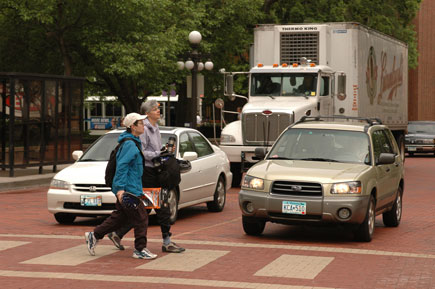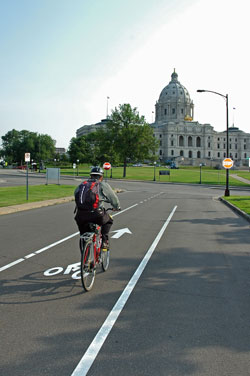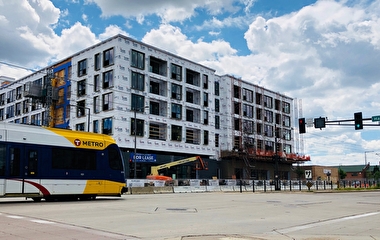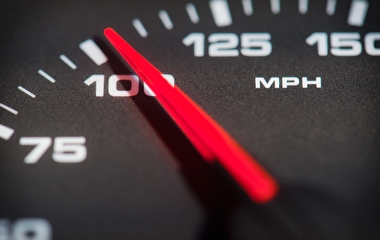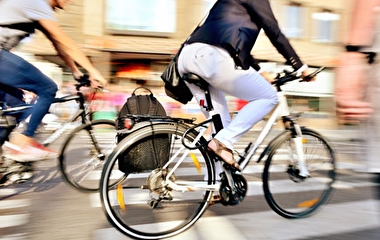U of M researchers have an important message for transportation planners: pedestrians and bicyclists are different. In a recent study, Greg Lindsey and Jessica Schoner explored the key differences between these two groups in order to help planners better track progress toward nonmotorized transportation goals and more effectively address the different needs of pedestrians and bicyclists.
“Transportation policies and plans are increasingly setting goals to encourage and increase walking and bicycling, but the challenges are significant,” says Lindsey, a professor in the Humphrey School of Public Affairs. “Two major obstacles are the lack of data to construct comprehensive measures of walking and bicycling, and a nuanced understanding of the important differences between these modes—this is the void our latest research helps fill.”
The study analyzed the Metropolitan Council’s Travel Behavior Inventory for the Minneapolis–St. Paul metropolitan area for 2001 and 2010 to illuminate the differences between walking and bicycling over time and to illustrate the implications for performance measurements.
“Essentially, we focused on the who, what, where, when, and why of nonmotorized transportation—who pedestrians and bicyclists were, where they went and why, when they traveled, and what factors were associated with the trips they made,” says Schoner, a Ph.D. candidate in civil engineering and lead analyst and project manager at Urban Design 4 Health. “We paid careful attention to areas in which pedestrians and bicyclists differed and how these differences affected planning and evaluation.”
Using a combination of statistics, modeling, and hypothesis testing, the researchers concluded that walking and bicycling trips were likely to be taken by different types of people for different reasons and at different times for different distances, and that each mode had different trends over the past decade. Among the differences: walking trips accounted for a higher mode share and they were shorter, more likely to be taken by women, less likely to be taken to commute, and more likely to be taken through the winter. In addition, the frequency of bicycling increased more than walking did, especially among men who biked to commute.
Study results show that a number of sociodemographic factors, such as age, play an important role in the choice to walk or bike, and they influence each mode in different ways. Older age reduced the likelihood of biking more than it did walking. In addition, the bicycling mode share was much higher for men than it was for women, and the disparity did not decline over the decade, despite significant increases in bicycling overall.
“These differences between walking and bicycling have important implications for performance management, including the choice of performance measures to assess progress toward multimodal goals,” Lindsey says. “Our results could also be used to develop more nuanced performance measures and targeted strategies. For example, a gender gap between men and women exists for bicycling but not walking, so planners could consider educational programs and performance measures for women with respect to bicycling.”
Study results were published in Transportation Research Record, the journal of the Transportation Research Board. The authors acknowledge and thank the Minnesota Department of Transportation, the Metropolitan Council, and CTS for financial and technical support for their work.
